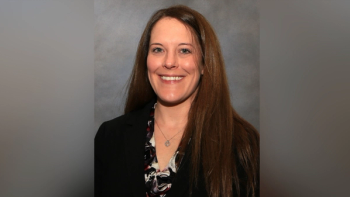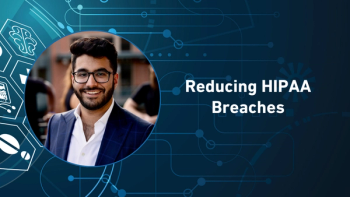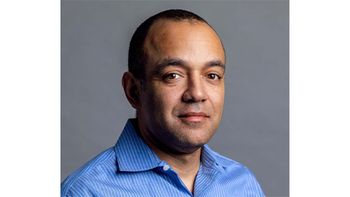
- Pharmaceutical Commerce - May/June 2017
Defining the digital opinion leaders (DOLs) in healthcare
As health brand teams elevate
their digital marketing sophistication, one channel that frequently remains an afterthought is: the Digital Opinion Leader (DOL).
DOLs are influential members of an online community to whom others turn for advice, opinions and information. Their influence flows from their reach within a community (how many followers they have), their resonance (how much their content is shared) and their relevance (how relevant their content is to a particular objective). The DOL is a new player in healthcare, born out of social media and technologies that didn’t exist until a few years ago. Their distinguishing characteristic is their use of social media to either create or amplify messages.
Few DOLs begin with the intention of becoming an “influencer;” most turn to the online world out of necessity: to seek advice, accomplish a task, share information or connect with others. Consequently, health DOLs are a varied bunch, ranging from healthcare providers and researchers, to patients and caregivers, to journalists and investors.
In the medical world, DOLs include clinicians exchanging opinions on therapies, discussing presentations from medical conferences, and sharing practical advice on disease and patient management. A further group of researchers and academics are exchanging knowledge around models of disease understanding and the implications of the latest studies.
In recent years, DOLs with professional backgrounds have converged around Twitter as a medium for publicity and public discourse, particularly around major medical conferences, while simultaneously turning to closed healthcare provider (HCP) platforms for peer-to-peer discussions. In the patient world, DOLs include patients, caregivers and patient groups. Health bloggers and so-called e-patients taking an active role in their healthcare have amassed large online followings. Some have leveraged their influence to form nonprofits, online media companies or patient associations. Traditional patient groups have also joined the fray, seeking new ways to reach audiences with their missions and messages.
Patient DOLs utilize a variety of online channels and, notably, are not beholden to a single medium, but continue to experiment with new channels such as Instagram or Periscope.
The opportunity
“Key Opinion Leader (KOL) management” has been a staple of life sciences business strategy for decades. Commercial and medical teams routinely identify and engage KOLs for tasks such as research, publishing or speaking. Patient advocacy teams regularly partner with patient associations or support groups on mutually beneficial projects. Few industry executives question the value of these activities.
Yet, few firms have adequately responded to the rise of the Digital Opinion Leader. DOL identification efforts tend to be fragmented and often fail to yield a repeatable process that can generate rich and actionable profiles. DOL engagement is often constrained to one-off projects, such as blogger summits, versus a sustained, continuous process of relationship building. The lack of clear organizational roles and guidelines within life sciences companies also limits potential impact. This is unfortunate because the emergence of the DOL is a force multiplier for life sciences peer-influence programs. A traditional KOL may have influence in terms of the articles written or the conferences at which they speak, but only a DOL has the outsize reach made possible through social media. Currently, DOLs and KOLs exist in largely different universes with little overlap. Typically, fewer than 20% of KOLs will also have a social media presence and just a handful will rank alongside DOLs in terms of online reach.
By properly involving DOLs in the creation of programs and by regularly sharing with them, life sciences communicators have a built-in megaphone that can expand the authenticity and reach of their messages, as DOLs willingly amplify messages across their social networks. Engaging with DOLs involves mapping online communities of interest, identifying and profiling DOLs within those communities, and then engaging with them.
The applications of DOLs to life sciences firms—specifically in achieving communication objectives—are extensive, from early research to commercialization on both the medical and patient sides. Examples include using DOLs for clinical trial recruitment, for disease perspectives, on advisory boards to shape education and support programs, for feedback on marketing messaging or tactics, as peer-mentors for patient support programs, judges for contests, as amplifiers of disease awareness, patient motivation messages, and patient support content and tools.
ABOUT THE AUTHORS
Gregg Fisher is founder and managing partner at The Stem (
Kevin Michels-Kim is a lead social media analyst at The Stem. He is also a partner in Merakoi, a social analytics firm based in Basel, Switzerland.
Articles in this issue
over 8 years ago
The sales rep study I’d like to seeover 8 years ago
Survey tracks evolving health economics function in pharmaover 8 years ago
Is your corporate board equipped to monitor incentive programs?over 8 years ago
2017 Product Security Reportover 8 years ago
Compliance Package of the Year goes to Merck’s Zepatierover 8 years ago
How cloud-based IT systems address FDA validation requirementsover 8 years ago
Future look: The Impact of Biosimilars on Oncologyover 8 years ago
New science energizes the cancer marketover 8 years ago
A Conversation with John Chiminski, CatalentNewsletter
Stay ahead in the life sciences industry with Pharmaceutical Commerce, the latest news, trends, and strategies in drug distribution, commercialization, and market access.





